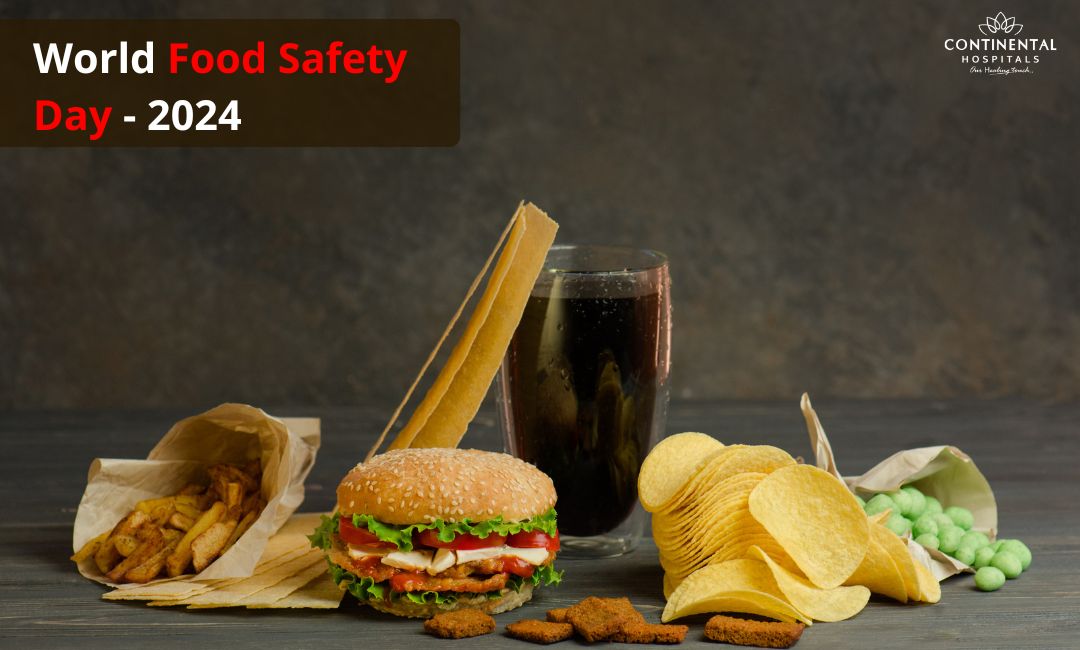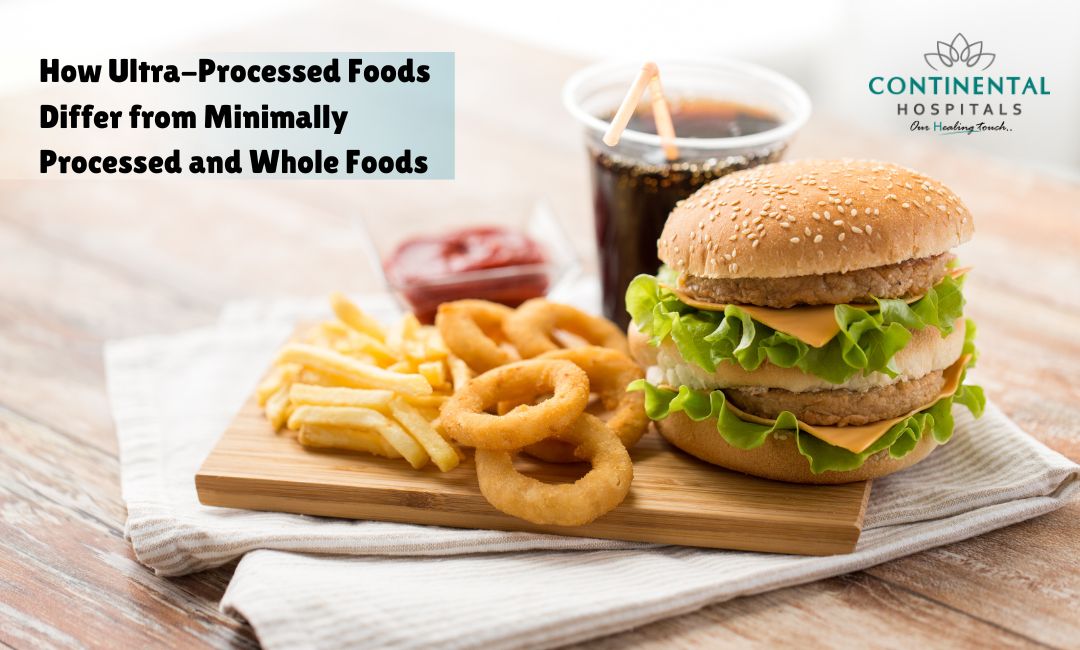Every year on June 7th, the World Health Organization (WHO) and the Food and Agriculture Organization of the United Nations (FAO) join forces to celebrate World Food Safety Day. This year's theme, "Food safety: prepare for the unexpected," underscores the critical importance of being proactive in safeguarding our food supply from potential hazards.
Despite significant advancements in food production and processing, foodborne illnesses remain a major global concern. According to the WHO, an estimated 600 million people fall sick annually due to foodborne diseases, with vulnerable populations like children and the elderly disproportionately affected. These illnesses not only cause discomfort but can also lead to serious health complications and even death, with an estimated 420,000 fatalities each year.
World Food Safety Day serves as a powerful platform to raise awareness about these issues and inspire action across all sectors of the food chain – from farm to fork.
Challenges in Ensuring Food Safety:
Despite advancements in technology and regulation, numerous challenges persist in ensuring food safety globally. These challenges include:
Foodborne Illnesses: Every year, millions of people suffer from foodborne illnesses caused by consuming contaminated food or water. Pathogens such as bacteria, viruses, parasites, and chemical contaminants pose a constant threat to food safety.
Globalization of Food Supply Chains: The globalization of food supply chains has increased the complexity of food production, distribution, and regulation. As food travels across borders, the risk of contamination and foodborne outbreaks rises, necessitating robust international cooperation and standards.
Climate Change and Environmental Factors: Climate change and environmental degradation affect food safety in various ways, including altering agricultural practices, water quality, and the prevalence of pests and diseases. Adapting to these changes requires resilience and innovation within the food system.
Food Fraud and Mislabeling: Food fraud, including the mislabeling, adulteration, and counterfeiting of food products, undermines consumer trust and compromises food safety. Detecting and preventing food fraud requires enhanced traceability and transparency throughout the supply chain.
Resource Constraints and Capacity Building: Many countries, especially in the developing world, face resource constraints in implementing and enforcing food safety regulations. Capacity building, technical assistance, and investment in infrastructure are essential to address these gaps and ensure equitable access to safe food.
Progress Towards Safer Food:
Despite the challenges, significant progress has been made in enhancing food safety at the global, regional, and national levels. Key initiatives and developments include:
The Codex Alimentarius: Established by the Food and Agriculture Organization (FAO) and the World Health Organization (WHO), the Codex Alimentarius Commission sets international food standards, guidelines, and codes of practice to protect consumer health and ensure fair practices in the food trade.
Technology and Innovation: Advances in technology, including blockchain, DNA sequencing, and rapid detection methods, are revolutionizing food safety by enabling faster, more accurate detection of contaminants and tracing the origin of food products.
Public Awareness and Education: Public awareness campaigns, educational programs, and community engagement initiatives play a vital role in promoting food safety practices, empowering consumers to make informed choices, and holding food producers accountable.
Regulatory Harmonization: Efforts to harmonize food safety regulations and standards across countries and regions facilitate trade, reduce barriers to market access, and enhance the consistency and effectiveness of food safety measures.
Everyday Steps for Food Safety
Individuals can make a significant difference in their own kitchens by adopting safe food handling practices:
Cleanliness is Key:
- Wash hands thoroughly with soap and water before handling food, especially after using the bathroom, touching pets, or handling raw meat, poultry, or seafood.
- Wash cutting boards, utensils, countertops, and other kitchen surfaces with hot, soapy water after preparing each food item to prevent cross-contamination.
- Rinse fruits and vegetables under running water before eating, cutting, or cooking, even if you plan to peel them.
Separate Raw and Cooked Foods:
- Keep raw meat, poultry, seafood, and eggs separate from ready-to-eat foods such as fruits, vegetables, and cooked meals to prevent cross-contamination.
- Use separate cutting boards and utensils for raw and cooked foods, or wash them thoroughly between uses.
- Store raw meat, poultry, and seafood in sealed containers or plastic bags on the bottom shelf of the refrigerator to prevent juices from dripping onto other foods.
Cook to the Right Temperature:
- Use a food thermometer to ensure that meat, poultry, seafood, and eggs are cooked to the appropriate internal temperature to kill harmful bacteria. Refer to safe cooking temperatures recommended by food safety authorities.
- Ground meats should be cooked to an internal temperature of at least 160°F (71°C), while whole cuts of beef, pork, lamb, and veal should reach a minimum internal temperature of 145°F (63°C) with a three-minute rest time.
- Poultry, including chicken and turkey, should be cooked to an internal temperature of 165°F (74°C), and seafood should reach an internal temperature of 145°F (63°C).
Refrigerate Promptly:
- Refrigerate perishable foods, including leftovers and takeout meals, within two hours of cooking or purchasing to prevent bacterial growth.
- Keep the refrigerator temperature at 40°F (4°C) or below and the freezer at 0°F (-18°C) or below to slow the growth of bacteria.
- Thaw frozen foods safely in the refrigerator, cold water, or the microwave, avoiding thawing at room temperature, which can promote bacterial growth.
Practice Safe Food Handling:
- Use clean utensils and serving dishes to handle cooked foods and avoid using the same utensils for raw and cooked foods.
- When serving food buffet-style, keep hot foods hot (above 140°F or 60°C) and cold foods cold (below 40°F or 4°C) to prevent bacterial growth.
- Discard any perishable foods that have been left out at room temperature for more than two hours (or one hour if the temperature is above 90°F or 32°C).
As we commemorate World Food Safety Day in 2024, let us reaffirm our commitment to ensuring the safety and integrity of the global food supply. By working together, harnessing innovation, and prioritizing food safety as a fundamental human right, we can create a future where safe, nutritious food is accessible to all, nourishing lives and communities around the world. Let this day serve as a reminder of the importance of vigilance, cooperation, and con
.webp)







